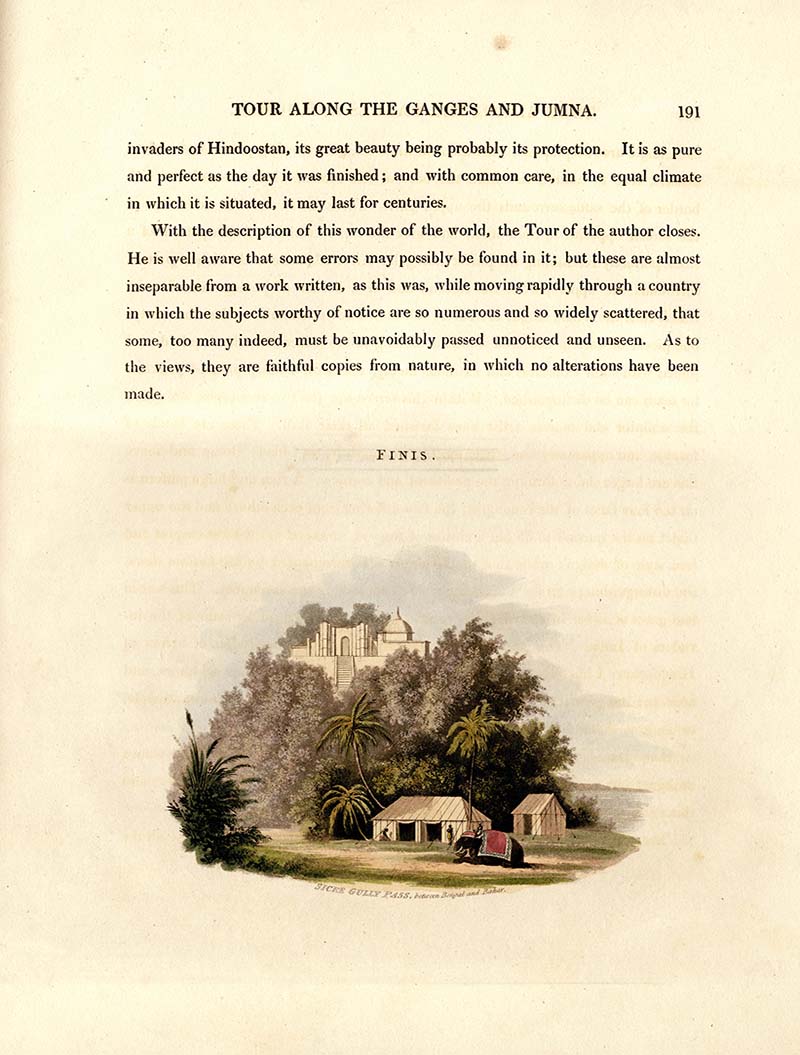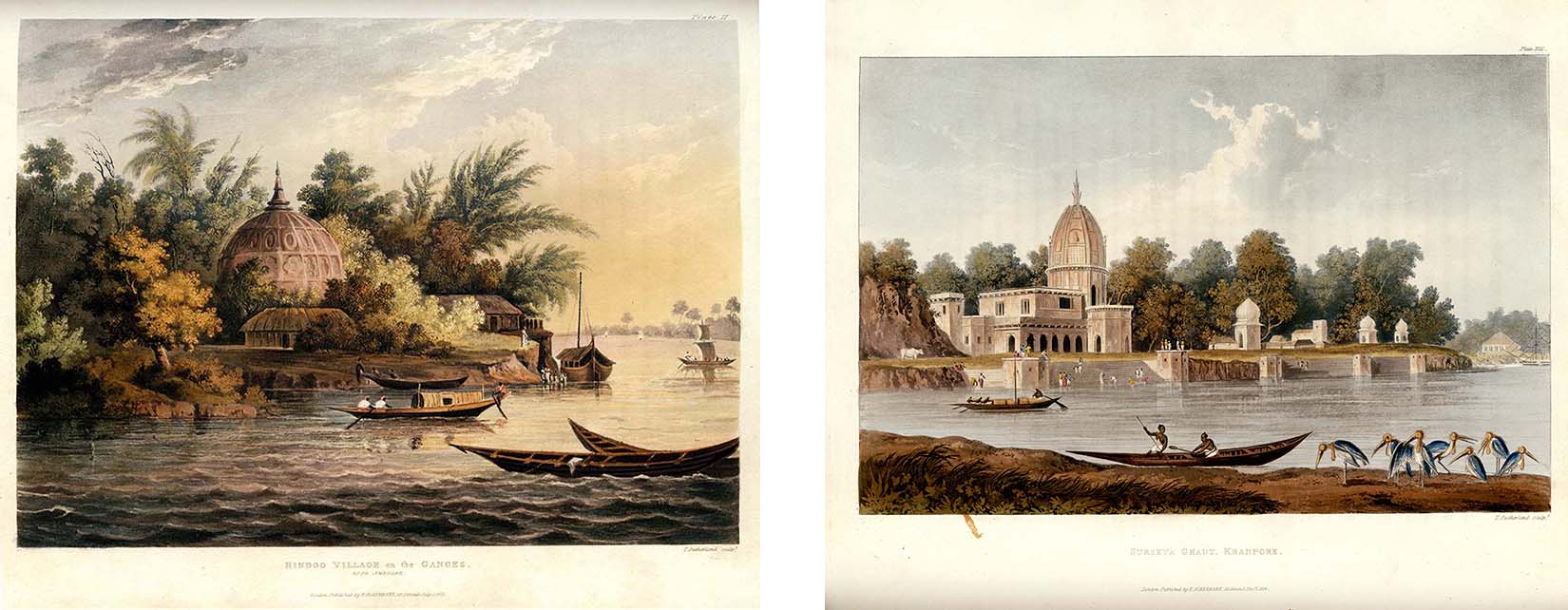Art and Empire in Nineteenth-Century India
Travel literature in 19th-century India was closely linked to the British empire. Behind every picture was an army. This is especially true of Lieutenant-Colonel Charles Ramus Forrest’s illustrated book, A Picturesque Tour Along the Rivers Ganges and Jumna, In India, (SpecCol RB Oversize DS408 .F65) published in 1824.

Lieutenant-Colonel Charles Ramus Forrest (d. 1827) was a British infantry officer and amateur artist who served in India between 1802 and 1811, first with the 3rd Regiment of Foot (“The Bluffs”) and later as an aide-de-camp to his father-in-law, General William St. Leger. His pictorial tour of India remains one of the most famous illustrated books on India in the 19th century. Forrest undertook his tour from Calcutta to Khanpore in December 1807 with a party consisting of seven British officers, three elephants, 200 servants, and an armed guard of 40 sepoys, or Indian soldiers.

An accomplished draughtsman, Forrest’s drawings and watercolors of his India travels highlight the close relationship between the military and visual arts during the 19th century. During this time, military academies trained soldiers in drawing and watercolor, which is where Forrest most likely honed his skills. The excellent aquatints by G. Hunt and Thomas Sutherland capture the watercolor impressions of Forrest’s plein air compositions, with special attention to the changing light and cloud formations of the Indian landscape. Forrest ends his primary tour of India at the place he knew best, at Khanpore, the headquarters of the field-command in Bengal where he was stationed.
